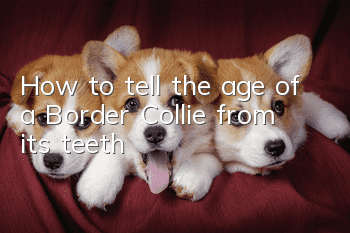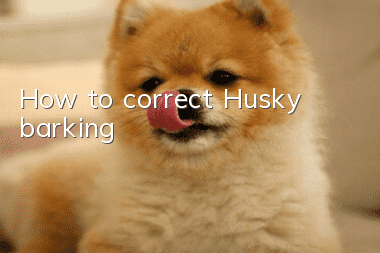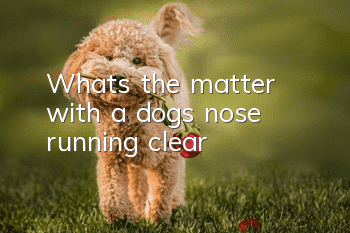How to tell the age of a Border Collie from its teeth?

Regarding the age identification of dogs, the growth status of the dog's teeth, the degree of wear of the tooth peaks and teeth, and the color of the teeth are important basis for judging the age of the dog. For example, an adult dog has 42 teeth, and all of its canines are short crown-shaped. The crowns of the first and second incisors of the upper jaw are tricuspid, that is, there is a large peak in the center, small peaks on both sides, and the other incisors have three peaks. There are two large and small peaks, the canine teeth are curved and conical, and the tips are sharp. They are weapons for attack and self-defense. The premolars are three-peaked and the rear molars are multi-peaked.
Puppies have deciduous teeth, which are white, thin and pointed, and are all uniformly long, with a total of 28 teeth.
Puppies develop deciduous teeth around 20 days after they are born.
4-6 weeks old, the milk incisors are all in full length.
At 2 months old, all 28 deciduous teeth have appeared.
2-4 months old, replace the first deciduous incisor.
5-6 months old, replace the 2nd to 3rd deciduous incisors and deciduous canines.
After 8 months of age, all teeth are replaced with permanent teeth.
A 1-year-old dog, the permanent teeth are all long, white and bright, and there are sharp protrusions on the incisors.
In a 1 and a half year old dog, the large peak of the first incisor of the lower jaw is worn to the level of the small peak.
In a 2 and a half year old dog, the peak of the second incisor of the lower jaw was lost.
In a 3 and a half year old dog, the peak of the first incisor on the upper jaw was lost.
In a 4 and a half year old dog, the peak of the second incisor on the upper jaw was lost.
In a 5-year-old dog, the peak of the third incisor of the mandible is slightly obliterated, while the first and second incisors of the mandible are ground into a rectangular surface. In a 6-year-old dog, the peak of the third incisor of the mandible has been worn away, and the canine teeth have been ground into a blunt round shape.
In a 7-year-old dog, the third incisor tooth of the mandible was worn to the root of the tooth, and the wear surface was vertically oval. In an 8-year-old dog, the first incisor of the mandible is worn and tilted forward.
In a 10-year-old dog, the wear surfaces of the maxillary first incisor and the mandibular second incisor are longitudinally oval.
A 16-year-old dog with missing incisors and incomplete canines.
- Can dogs get tooth decay?
- How much does a Shih Tzu cost and is it easy to keep?
- Can dogs eat watermelon in summer?
- What is canine parainfluenza? Symptoms and treatment of canine parainfluenza
- How to train and correct little Springer’s bad behavior
- What to do if your dog has urinary incontinence
- Is Pug a picky eater if he doesn’t eat dog food well? Pug dogs are picky and don’t eat dog food!
- There are several foods that are not good for your dog’s health, not even one bite!
- Do Pomeranians have body odor?
- What kind of food should dogs eat?



